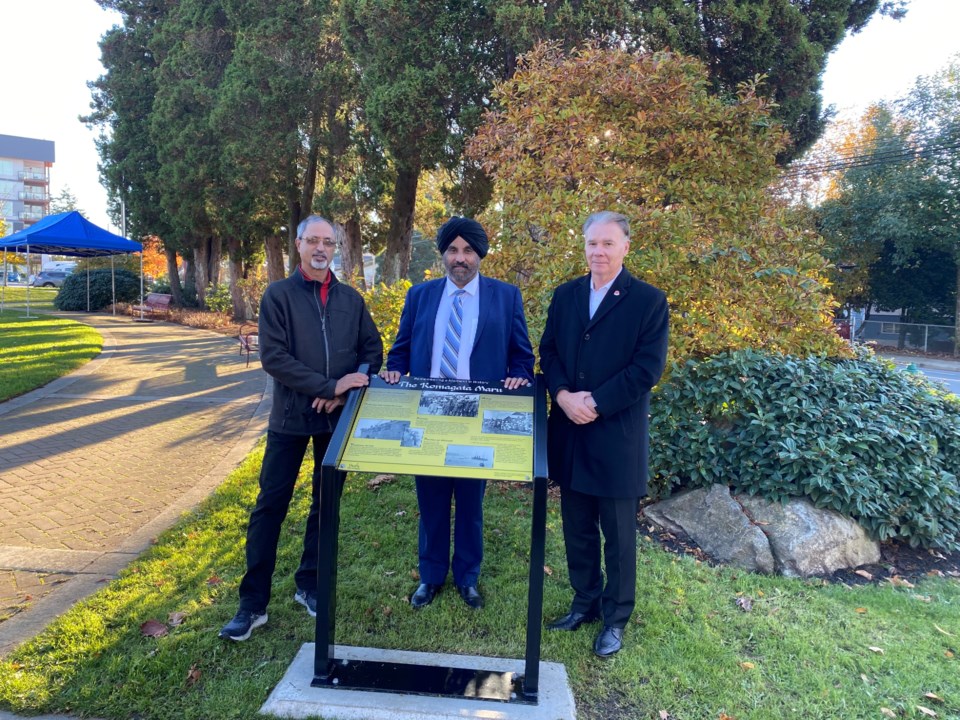On Monday, the City of Delta helped unveil a Komagata Maru interpretive sign in the North Delta Social Heart Plaza.
Delta installed the sign so that residents can be better informed of the hardships and struggle that the passengers of the Komagata Maru endured.
“It’s a great tribute to those passengers who suffered a lot during the tragedy,” said Raj Singh Toor, vice-president and spokesperson for the decedents of the Komagata Maru Society.
Toor has been working with the City of Delta for the past year to have some recognition in Delta.
Toor offered thanks to the City of Delta, including Mayor George Harvie, council, city staff and the Heritage Advisory Commission for their work.
“We can’t undo the past, but we can move forward and leave a legacy for future generations by educating them about the past,” said Toor. “This new Komagata Maru story board sign in the North Delta Social Heart Plaza will help educate the community and remind us of Delta’s diverse makeup. I hope that it will help in connecting British Columbians, Canadians, and Delta residents with their past, in order to build a more peaceful and tolerant tomorrow.”
The Komagata Maru arrived in Vancouver on May 23, 1914 with 376 passengers including two women and five children, one of which was Toor’s grandfather Baba Puran Singh Janetpura. The passengers were Sikh, Muslim, and Hindu, and all were British subjects. Their British citizenship made them eligible to enter Canada.
Toor said the welcome received by the passengers of the Komagata Maru was a cold refusal by the government to allow the ship to dock. No food, water or medication was provided, even though it was the government's discriminatory law that prevented the passengers from disembarking. The local South Asian and First Nations communities provided the passengers with food, water and medication. Furthermore, this help was limited by the Canadian government because it restricted the Canadian South Asian community from accessing the ship. Often the passengers went for 24 hours without food and water, and sometimes two or three days.
The ship was sent back to India after two months, forcefully, under the shadow of a military ship as a result of a discriminatory act by the Government of Canada, without allowing the passengers to disembark.
“In 1968 my uncle sponsored my grandfather to come to Canada,” said Toor. “However, my grandfather refused, saying that he had a painful, bitter memory of Canada. He said that he did not want to move to Canada, but he foresaw that in spite of what happened in 1914, the South Asian community would be very successful, and live happily and peacefully in Canada.
“The descendants of the Komagata Maru Society worked for more than 15 years for apologies from the governments involved in the incident. We never asked for any compensation.”
On May 18, 2016, Prime Minister Justin Trudeau apologized to the descendants of the Komagata Maru and the South Asian community in the House of Commons and on May 23, 2018 the BC Government apologized for the Komagata Maru incident in the BC Legislature. On June 10, 2020, the City of Vancouver apologized for its role in the 1914 Komagata Maru incident and also Sept. 27, 2021 the City of New Westminster apologized for their previous council role in the Komagata Maru incident behalf of Toor’s request.


